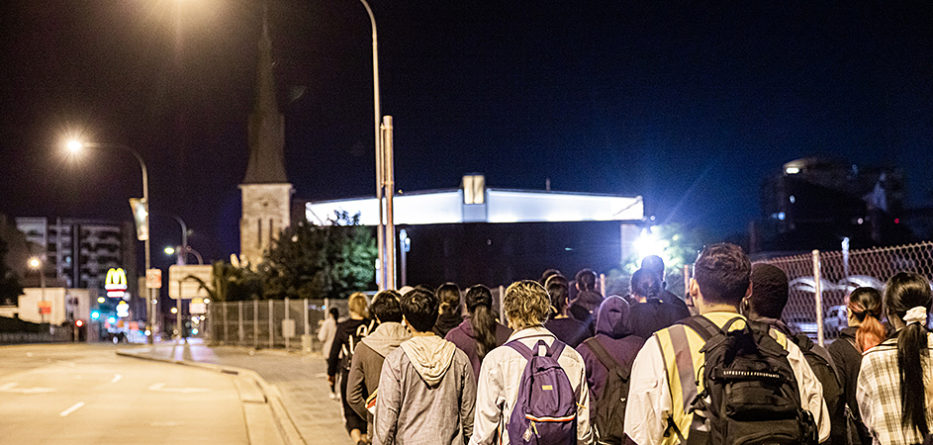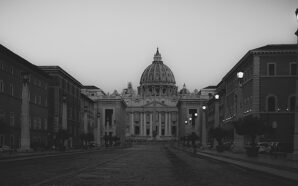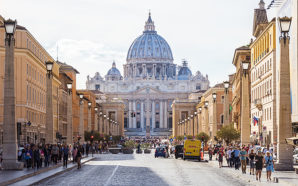One of the most significant changes in the Church in the past few years has been Pope Francis’ insistence on synodality, a return to the freshness of the beginnings of the Church
The word sunodia — or synod — comes from two Greek words that literally mean “together on the way”. It occurs only once in the New Testament, but it occurs at the heart of a dramatic event when Jesus was twelve years old and went missing in Jerusalem. His parents had assumed he was somewhere among the group of travelers who were returning to Nazareth. The Gospel describes them as a sunodia, which is often translated into English as a “caravan” (see Luke 2:44). In this case, however, Jesus was not on the road. He was in the temple. The sunodia was incomplete without him.
Jesus’s ministry was largely spent on the road. Occasionally, though, he sat down by a well, or in a boat, or on a hill, or near the temple. Sometimes, he sat down to teach; other times he sat to rest and to contemplate what was happening around him. Often, he taught in synagogues, and occasionally he visited the temple. Synodality involves a journey, but it also entails contemplating what is happening around us, and sometimes sitting and listening to what others have to say.
The equivalent of the temple today, for Catholics, is the cathedral. A cathedral is the opposite of a synod in that it is relatively immovable and unchanging. A cathedral is a church in which the seat of the bishop is placed, usually in the sanctuary. That’s what the original Greek word, kathedra, meant, a place where you sat down.
Cathedrals are the locus of teaching and ritual in the life of the Church. The authority of the bishop comes from the Holy Spirit and guides the people.
Listening: how the caravan and cathedral go together
The Catholic Church is diverse rather than uniform. There are times when some elements threaten division, but the Church must transcend division and seek unity. This requires listening. This is how the cathedral and the caravan go together. Synodality offers an attractive image of the way a Christ-centered Church would proceed. In this image, the Church is a caravan of solidarity, guided by Jesus Christ, and so having direction and intentionality. It is Christ’s Way. Occasionally the Church stops for a rest and a cathedral is built.
The word synod was commonly used in the early Church to describe local gatherings of bishops and priests. In 1965, following the reforms of the Second Vatican Council, Paul VI established the Synod of Bishops as a permanent institution to assist in the governance of the Church. Fifty years later, Francis insisted on including the laity and emphasized the pre-eminence of the Holy Spirit.
A synodal Church is a Church which listens, which realizes that listening “is more than simply hearing”. It is a mutual listening in which everyone has something to learn. The faithful people, the college of bishops, the Bishop of Rome: all listening to each other, and all listening to the Holy Spirit, the “Spirit of truth”, in order to know what He “says to the Churches”.
Francis uses the word synodal not just to describe a structure but, more importantly, to shape an attitude, a readiness to listen, a way of inhabiting a structure. Synodality reminds us that how we inhabit an organizational structure is more important than the structure itself. Being synodal means being inclusive of and listening to everybody.
The destination is yet to be revealed
Synodality is not, however, the same as democracy, because the minority voice might be the voice of the Holy Spirit. Nor does synodality mean making compromises, which is the least satisfactory way of resolving diverse views. Rather, it may mean embracing several views, within agreed boundaries. It may require everyone to leave their boats behind, striving to come to a new place together, and developing a closer and more loving unity.
Thus, in launching the process for the 2023 assembly of the Synod of Bishops, Francis notes that synodality offers us the opportunity to become a Church of closeness. Let us keep going back to God’s own “style”, which is closeness, compassion and tender love. God has always operated that way. If we do not become this Church of closeness with attitudes of compassion and tender love, we will not be the Lord’s Church….The Holy Spirit guides us where God wants us to be, not to where our own ideas and personal tastes would lead us.
Being part of a caravan goes back to the beginnings of the stories about our faith, when God tells Abraham, “Go from your country and your kindred and your father’s house to the land that I will show you” (Gen 12:1). Thus, it is that the oldest texts in the Bible remember Abraham as “a wandering Aramean” (Deut 26:5). Today, in the same spirit, Francis challenges us to leave “our personal tastes” behind and to travel into a new country. The way is known, it is synodal. The destination is yet to be revealed.
Being a synod is different from having a method. Method means following a particular way, following specific rules to achieve a predetermined goal. In a method, it is important to follow the recipe exactly. A synodal Church, however, is less concerned about predetermined goals. It is not disorganized, but it makes room for the Spirit. It attends to prophets and stragglers. It is inclusive of persons rather more than being inclusive of ideologies. As well as acknowledging the authority of the cathedral, it appreciates that every person is a doorway into the mystery that is the Body of Christ. As French theology professor Agnès Desmazières notes, “Synodality means taking the risk of surprise.”
John Honner taught at Jesuit Theological College for many years and was a member of a writing group preparing for the 2021 Plenary Council of the Catholic Church in Australia. This article – an edited extract from his book, What’s Church all about? (Paulist Press, 2022) – was first published by Eureka Street.
Republished with permission from La Croix International.








